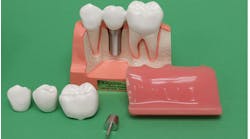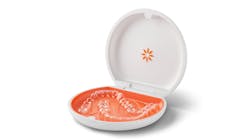How does it make you feel to walk into a car dealership or other establishment and a fast-talking salesperson tries to pressure you into a purchase you’re not ready to make? Even if you are ready, how do you like being pressured? High-pressure sales are off-putting for many people, and the same is true of treatment plan presentations. In this era of production goals and the genuine need for care of many patients, what can the ethically minded dentist and practice do to get patients to accept treatment without scaring them off with high-pressure sales?
It starts with the first contact, whether that’s by phone, email, or online inquiry. Chances are they’ve heard good things about your office from another patient, from your marketing, or from online reviews, so you want to live up to your reputation. In every communication with patients, the objective is to be genuinely friendly, helpful, upfront, and professional.
Handling the new-patient call
Your front office team will need to make time for new-patient calls to give people their undivided attention. Find out what the patient’s chief complaint is by asking, “What’s going on with your teeth?” Patients call with problems, and they appreciate empathy. They will often answer the question in detail, which can be extraordinarily helpful if they decide to schedule. Do they need to fix their tooth before a wedding? Are they in pain? Are they afraid of the dentist? This information will help you to understand their situation and better address their problems.
More from the Bernsteins
How to minimize your involvement with insurance
The “magic pixie dust” to improve your practice
While some may say you shouldn’t quote fees or diagnose over the phone, not only is there nothing wrong with letting patients know your fees, but it also helps to foster trust. The first contact is an opportunity to explain your financial policies and tell the prospect what’s expected of them. When they ask the inevitable, “Why is it so expensive?” your staff’s answer should be, “I know! Dentistry is so expensive these days. But Dr. Comfort will take really good care of you. She really does a great job, and our patients love her.”
If the patient isn’t prepared to pay your fee, you can help by referring them so no one’s time has been wasted. If they decide to schedule, you’ve already primed them for treatment acceptance because they know your office policies, they know the fee, and they’ve heard people praise you. Tell them you will send them their new-patient forms to fill out in advance so you can prepare for their visit. Be sure to plan enough time (90 minutes) to do the job well.
The nonthreatening consultation
Once the patient comes in for their appointment, meet them in a nonthreatening consultation room after reviewing the new-patient forms and be fully prepared with details about them. The consult is a face-to-face meeting, with details from the forms committed to memory so they understand that you’re informed about their situation. Start with some friendly conversation. But you should know the chief complaint, if they’re allergic to penicillin or latex, what drugs they’re taking, if they’ve been in an accident, if they’re in pain, if they’re afraid of the dentist, if they want a nicer smile, etc., all while having a normal getting-to-know-you conversation, and without looking at a computer or forms.
After a pleasant conversation, it’s time for the exam in the operatory. This is an opportunity to impress upon the patient that you are gentle, thorough, and knowledgeable. Here is a helpful exam check list:
- Perform oral cancer screening. Ask if they have any lumps or bumps. Advise them to consult their physician if they ever find anything unusual. Be thorough. Palpate lymph node chains and the floor of the mouth.
- Do TMD/TMJ screening and answer questions. Ask if their jaw clicks, if they get headaches, or if they get sore jaw muscles. Feel the outside of their TMJs and use your pinky fingers inserted into their ears to feel from the inside.
- Palpate all muscles of mastication, extra- and intraorally, to screen for painful muscles (patients love extraoral palpation).
- Check occlusion.
- Ask sleep apnea screening questions and perform an airway exam.
- Feel for any tori or exostoses that may indicate a clenching habit.
- Ask if they floss, then do a perio screening. Provide oral hygiene instructions.
- Do a dental exam to check for missing, worn, fractured, decayed teeth, and for failed restorations.
- Don’t judge! If they’re in your office, they’re doing a good job.
Next, tell the patient that x-rays are included in their exam, and proceed with an FMX, CBCT, intraoral scanning, or whatever images you need. Then take a full set of clinical photos. It is advisable to use a digital single lens reflex (DSLR) camera and to immediately project the photos onto a TV in the operatory. In most cases, patients have not had such a thorough exam. But the important work comes next when you present the treatment options.
The treatment plan presentation
Show the patient their photos and other images. Ask if they have any questions or input. Most patients have never seen close-up photos of their mouth and they’re often blown away. After the exam and images, you should have a good grasp of what the treatment options are.
On a clipboard, write “Options” and “Option 1,” which is the most important because it takes the pressure off and sets you up for treatment acceptance. Option 1 is “Do nothing.” When you show this to the patient and tell them that doing nothing is a legitimate option because this is not a heart attack, brain cancer, or even a dental emergency, they relax and often say something like, “Well, I have to do something.”
Presto! That opens the door for you to present all legitimate options for treating the patient. Option 2 might be perio or a prophy. Option 3 might be fillings and crowns. Option 4 might be ortho. Option 5 might be whitening or veneers. Option 6 might be tooth replacement, and so on. After you present all the options, ask them if they’re interested in any of the treatment plans. They will often choose one or more and your staff can write up the treatment plan.
Often, patients really do need to talk to a family member before scheduling expensive dental care. To be helpful, you can follow up in a few days with a call, text, or email to ask if they have any further questions. Using these ideas, it’s possible for most dentists to gain the trust of prospective patients, to further that trust during the exam and consultation, and to enlist the patients in treatment with zero pressure and the patient’s best interest always in mind.
Editor's note: This article appeared in the April 2023 print edition of Dental Economics magazine. Dentists in North America are eligible for a complimentary print subscription. Sign up here.






